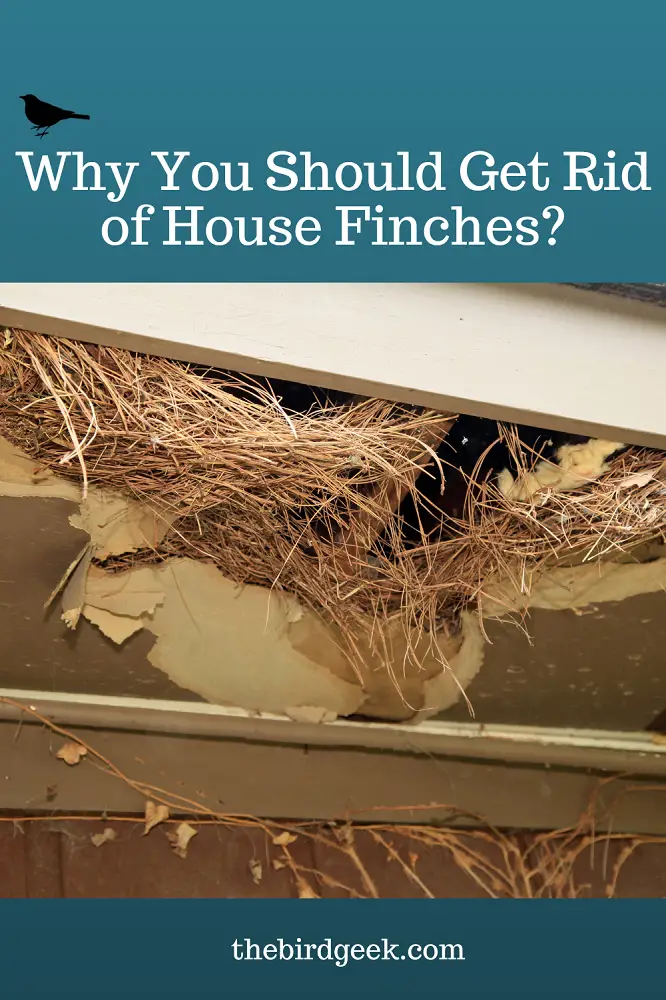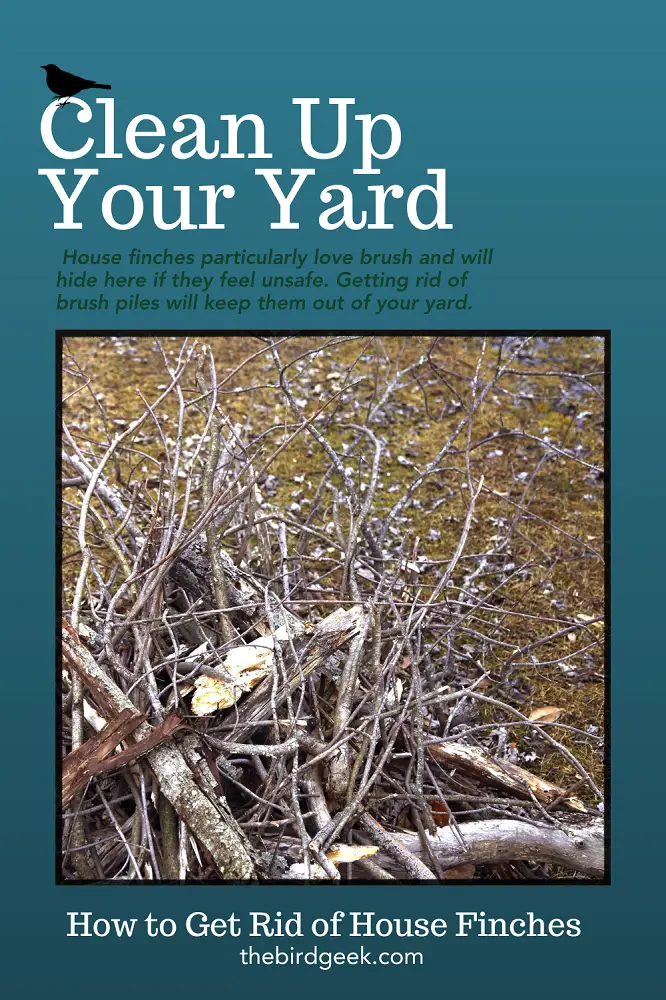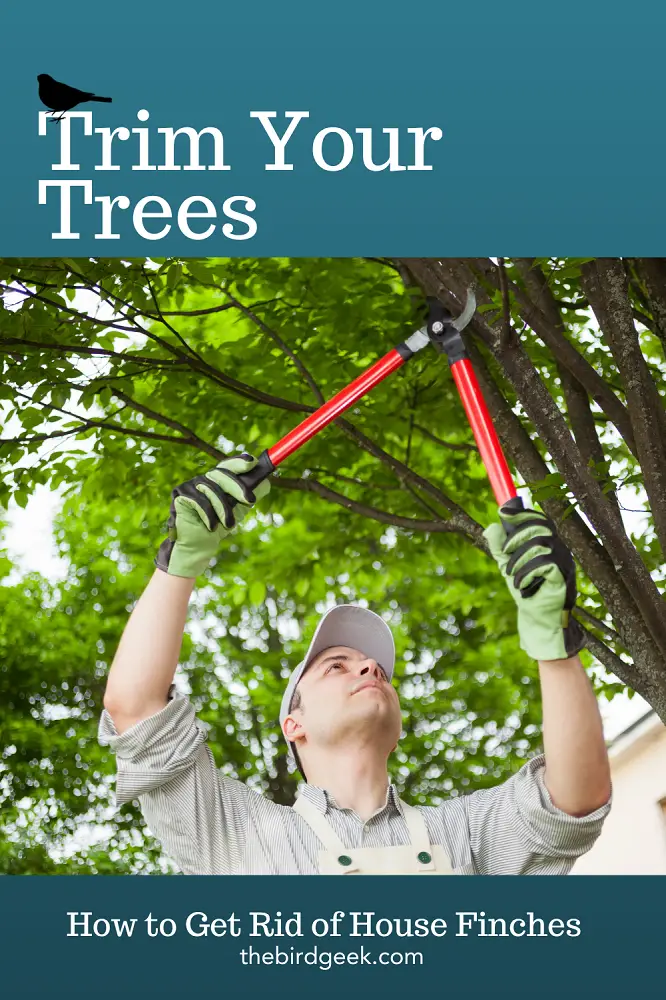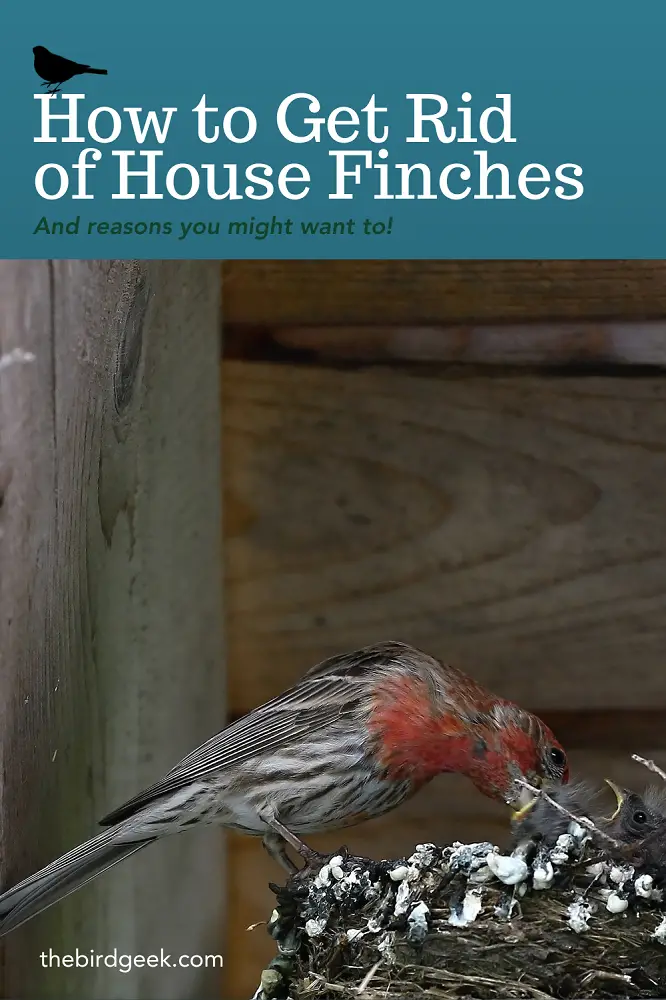How To Get Rid Of House Finches
That group of pleasant, chirping birds in your backyard that seems to get along with just about every species is probably a flock of house finches. We can say that with confidence because the house finch has spread rapidly across the country to become one of the most widespread and best-known birds. However, some people simply don’t want them in their yards for whatever reason. While that makes us sad as bird lovers, we get it.
Thankfully, there are ways to get rid of house finches that won’t hurt them and ensure that they can go on to live happy and healthy lives far from your house. Let’s break down several of these techniques below and provide you with a few simple tips that can make this process safer and less emotionally devastating for you and the house finches.
Why You Should Get Rid of House Finches

Most people will tell you that the house finch is a cute and friendly bird that doesn’t aggressively attack humans or other species. Why, then, would you want to get rid of them? Well, not everybody likes house finches or may simply want to get them out of their yard for any number of reasons. Just a few situations that might require removing house finches include:
- Home damage caused by house finches nesting in your roof or garage
- Loud singing that might make it hard for you to sleep at night
- Disease transmission, including e. coli and even salmonella
- Allergies to bird droppings, nesting materials, or feathers
Related post: Learn more about House Finches and their nesting habits!
Six Steps That May Help You Get Rid of House Finches
If you’re tired of house finches in your yard for the reasons mentioned above or for other related issues, make sure that you follow the steps below. We suggest following them in order because the first few are the least expensive and disruptive. The latter steps cost a bit more money but may work more effectively if other steps fail.
Step One: Install Upside-Down Perch Feeders
Did you know that there are many birds that can actually feed upside down and even prefer to eat that way? We say power to them, though we don’t think we could do it ourselves. However, the house finch isn’t one of them! So, if you have house finches invading your yard and eating all your bird feed, install upside-down perch feeders to keep them out of your yard.
Note that you might also scare away other birds that don’t feed upside down, which can be frustrating if you’re used to spotting these fun and engaging species. As a result, you might want to consider other more house-finch-specific techniques that can keep them out. We suggest starting here, though, because it’s the least-invasive option available now.
Related post: Capture your frequents with these bird feeders with wireless cameras.
Step Two: Clean Up Your Yard

Do you have a lot of brush in your yard that seems to attract birds of all types? Well, house finches particularly love brush and will hide here if they feel unsafe. If you regularly clean up your yard and get rid of this waste, you can keep house finches out of your yard. The best thing about this step is that it also gets rid of other birds and even pests like snakes and ticks.
Note that you can change this technique if you want to attract birds to your yard instead! The Audubon Society highly suggests this method if you’re interested in getting birds like the house finch in your yard. Note: like other imprecise techniques, this method will attract all birds that like brush, so try to use it within reason to ensure you get better results.
Step Three: Regularly Clean Up Your Trees

While house finches enjoy hanging out in brush piles and other areas, they mostly spend their time in trees because they’re warm and keep them even safer. House finches particularly enjoy dense trees with extensive leaves that can keep them protected from eagles, hawks, and other predators. Dense trees with thick leaves also provide house finches with lots of food to eat.
Therefore, keeping your trees more carefully trimmed will eliminate finch hiding spaces and food and drive them out of your yard. Just as importantly, trimming unnecessary branches and getting rid of dead limbs will make your trees even healthier. This kind of simple cleanup will keep your yard safer and minimize the risk of house finch yard invasions.
Step Four: Seal Holes in Your Homes
Like other birds, house finches will make their nests wherever they feel the safest and most protected. Sometimes, this might mean a hole in your home’s roof where they can stuff a nest. In fact, a house finch that finds these kinds of areas in a yard, they’ll flock back to it again and again and keep building nests there. Keeping them out of these spots can minimize finch invasion.
So, make sure to look over your home and hire someone to do a complete exclusion of your home’s exterior. An exclusion is a process of identifying these areas and sealing them up with various materials, like wires and even wood. Try to fully seal up all these areas properly, including getting rid of any house finch nests that might be hanging around in them still.
Step Five: Install Deterrents
House finches are like any bird in that they can be easily scared away using various deterrents. These deterrents will vary based on the species, so you must carefully choose which makes the most sense for you. For example, a simple scarecrow or two positioned around your yard might scare finches and other birds away: though rarely crows, it seems.
More effective deterrents include strips of aluminum foil, old CDs, pie tins, peppermint oils, citrus oil, eucalyptus oil, bird netting, decoy birds (owls and hawks in particular), bird spikes on ledges throughout your yard, bird gels (a stick but non-dangerous substance that annoys house finches), and even sound devices that will drive finches from your house.
Just note that this approach also has an “all or nothing” effect. By that, we mean that other birds you might want in your yard will be driven away by these deterrents. As a result, if you want to keep other birds in your yard without driving away your favorite species, it’s probably best to jump right to the next step to work with a professional to keep birds away.
Related post: Try These Bird Nest Deterrent Methods
Step Six: Call an Animal Control Specialist

If more conservative methods don’t get rid of house finches in your yard, it’s time to call in the pros! Animal control experts are conservationist professionals who can catch and relocate birds and other animals. They’re a great option if you feel like you’ve tried everything, but nothing has worked, and you’re getting frustrated with your lack of progress.
Don’t worry about these bird removal experts damaging your favorite species: they’re professionals for a reason! They’re trained to safely and successfully capture birds without injuring them. They’ll use live traps that can gather several house finches safely and make them easier to move. That’s a critical thing to consider if you love birds as much as us.
What exactly happens when they capture these birds? Do they sell them to pet stores or just move them a few blocks away? No. They actually carefully relocate every bird that they capture to ensure that they have a happier place to live. By identifying bird-friendly habitats, they ensure that house finches are happy and comfortable after being moved.
We also suggest this option if you want to get rid of house finches specifically but would rather keep other birds in your yard. They can focus just on these birds and get rid of them without disrupting your favorite owls, robins, or other beautiful birds. We only suggest them last here because this step is more expensive and slightly more traumatic to the birds.
Tips for Keeping House Finches Safe When Trapping or Scaring
If you’re interested in trapping or scaring house finches from your home, it’s important to make sure that you follow several steps to ensure that you keep them safe. Simply put, there’s a huge risk that you could hurt them accidentally if you don’t handle them properly. We strongly suggest that, if you use traps, you always work with a professional on removal. The finch might get hurt or may attack you and cause more trouble. Other tips to consider include:
- Put Up Scarecrows Near Common Nesting Areas: When putting up things like CDs, sound emitters, aluminum, and other scare-based tools, put them near where your house finches nest. You can also scatter them near bird feeders, though this will scare away other species too.
- Reading the Instructions: Whenever you’re working with various bird-removal products (such as spikes or sticky substances), read the instructions carefully to ensure that you fully understand what you’re doing. This step also minimizes potential conflict issues.
- Pay Attention to Your Children and Pets: Do you plan on installing sticky gels or even spikes throughout your yard to keep out house finches? Only place these items in areas that won’t affect your kids or pets. Though not necessarily dangerous, they can be injurious.
- Read Local Regulations: Your area has specific rules and regulations that you must follow to keep animals safe and avoid legal issues. For example, you have to check traps frequently to make sure birds aren’t in them too long and release them using animal control experts.
- Research Appropriate Release Areas: Don’t just take your house finches a few miles away and release them. Instead, try to find rural areas near you where house finches can nest. Try to keep them away from other people’s houses as a common courtesy to your neighbors.
Wrap Up – How to Get Rid of House Finches

These steps should help improve your experience and minimize the risk of hurting the birds or yourself. After all, you are a bird lover: you don’t want to do anything that will put your favorite species in danger. It will take a careful approach when utilizing these steps to keep the birds from injury. As always, we strongly suggest that you work with a professional when taking these steps, as they can ensure that things go smoothly and effectively for you.
References:
